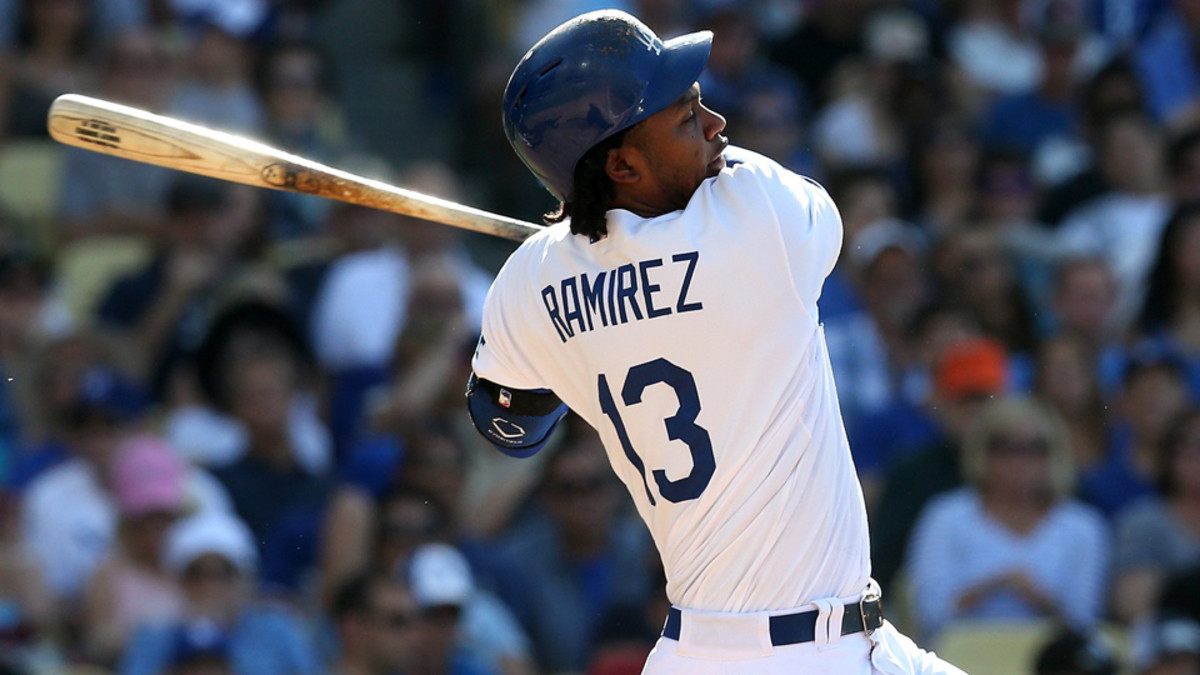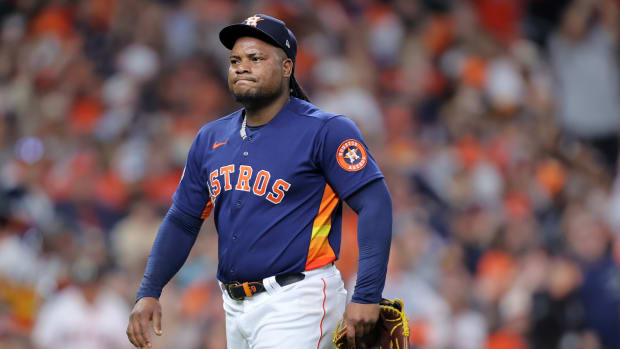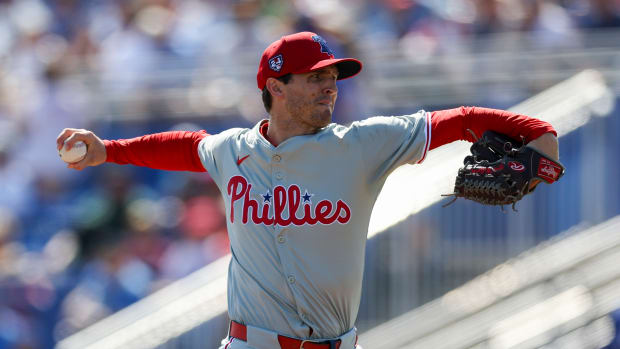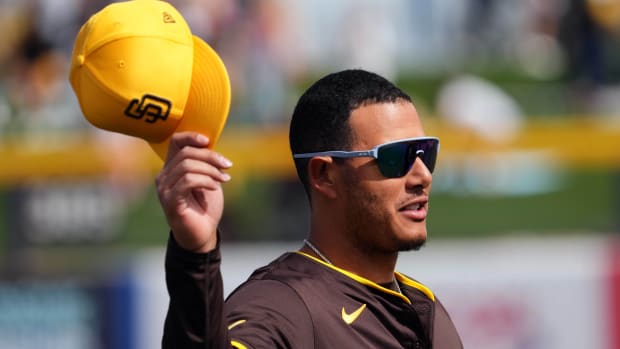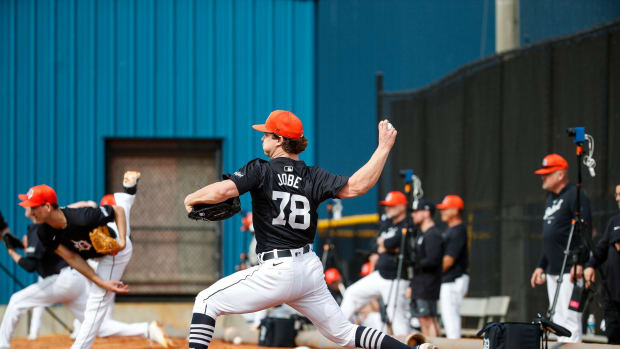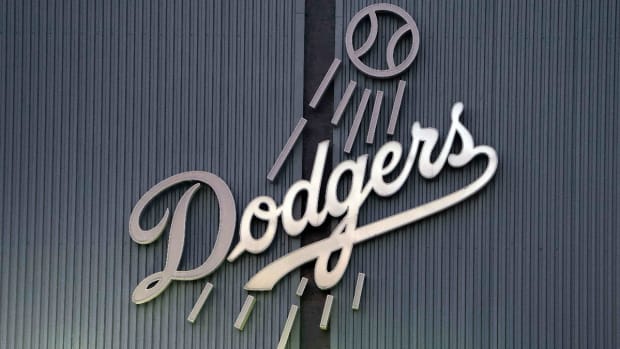What's He Really Worth: Hanley Ramirez is high reward, high risk
If Pablo Sandoval's annual ups and downs make him a tough free agent to evaluate, then Hanley Ramirez is even more difficult. After all, Sandoval has yet to turn 30, still plays a competent third base, and his major injuries have been freak accidents, fractures caused by trauma of one type or another. Ramirez is an elite hitter when the stars align, but he's older and subject to frequent aches, pains and strains that keep him out of the lineup. Furthermore, the evidence suggests that he should be bound for a new position. What's an appropriate price for his services?
What's He Really Worth: Pablo Sandoval shouldn't get $100M
I'll get to that, but first, a review of his performance. Once upon a time, Ramirez ranked among the game's most promising young players. Signed by the Red Sox out of the Dominican Republic in 2000, he made just two plate appearances for Boston in September 2005 before being dealt to the Marlins in a seven-player blockbuster that also sent Anibal Sanchez to Florida and both Josh Beckett and Mike Lowell to Boston. He won NL Rookie of the Year honors as a 22-year-old in 2006, the first year of a five-year stretch over which he hit a combined .313/.385/.521 for a 136 OPS+. He was powerful, durable and valuable, averaging 25 homers, 310 total bases, 152 games and 5.2 Wins Above Replacement per year. He earned All-Star honors three times in that span, won the NL batting title in 2009 (hitting .342/.410/.543 en route to a career-best 7.3 WAR), and finished second in the league's MVP voting behind unanimous winner Albert Pujols.
In a rare instance of the Marlins shelling out money, the team signed Ramirez to a franchise record six-year, $70 million extension in May 2008, a deal that covered his last six seasons — his first three years of arbitration eligibility as well as three potential years of free agency. But all did not remain sunshine for Ramirez in the Sunshine State. He started slowly in 2011, hitting just .210/.306/.309 before going on the disabled list due to lower back inflammation — his first such stint, though he had been out of the lineup many times due to more minor complaints and had undergone offseason surgery to repair his left labrum following the 2007 season.
His performance picked up once he returned, but in July, Jeff Conine — known as "Mr. Marlin" for his time with the team, and by then a special assistant to club president David Samson — called him out during a radio appearance, praising him as "one of the top five talents in baseball" but also criticizing him for not "putting 100 percent on the field every day" and saying he would trade Ramirez if it were up to him. Shots fired.
Ramirez fired back, accusing Conine of hanging onto past glories out of fear that he would be supplanted ("I think he wants to be Mr. Marlin forever… I'm coming, baby. I think I'm going to be Mr. Marlin…") and calling him "chicken" for airing his criticism publicly instead of communicating it directly. The week after the exchange, Ramirez re-injured his left shoulder diving for a popup. The team listed him as "day to day" for more than a week before finally DLing him, and while he went 10-for-21 on a rehab stint in late August, he suffered a separated shoulder while taking swings on deck and needed season-ending surgery to repair the instability.
Athletics' deal for ex-Royal Billy Butler is true headscratcher
That winter, with their new ballpark about to open, the Marlins made a big splash by signing free agents Heath Bell, Mark Buehrle and Jose Reyes — the latter to a six-year, $106 million deal that both eclipsed that of Ramirez and snatched away his position. Despite his friendship with his new teammate, Ramirez told the Marlins he didn't want to move to third base, nor did he want a trade. He eventually came around to accepting the shift, but his offense lagged (.246/.322/.428) and he struggled at the new position (-10 Defensive Runs Saved in only 90 games) as the Marlins' season unraveled. On July 25, the team traded him to the Dodgers in a deal that brought back Nathan Eovaldi. His first eight games for L.A. came at the hot corner, but he soon swapped places with shortstop Luis Cruz, and his offense rebounded slightly.
He wasn't done with third, alas. Playing alongside Reyes for the Dominican Republic team in the World Baseball Classic the following spring, he tore a ligament in his right thumb and needed surgery, costing him most of April, and less than a week after returning, strained a hamstring, sidelining him for another month. Once he returned, he put together one of the best offensive stretches of his career; in 86 games, he hit .345/.402/.638 with 20 homers. With solid defense (+3 DRS, 0 UZR), and while playing through minor back and hamstring issues that sidelined him for a few days at a time here and there, he finished with 5.4 WAR (his best total since 2009), helping the Dodgers reach the NLCS. His season ended on an angry note; Cardinals pitcher Joe Kelly drilled him in the ribs in the series opener, causing a fracture that limited him to a 2-for-15 performance in defeat.
Ramirez couldn't maintain that torrid pace in 2014, nor could he stay fully healthy. Battling more aches and pains and missing 15 days due to an oblique strain in August, he nonetheless hit a potent .283/.369/.448 — the top on-base and slugging percentages for shortstops qualified for the batting title (read: besides Troy Tulowitzki) — with 13 homers and a 132 OPS+ in 128 games. His defense (-9 DRS, -10 UZR) wasn't so pretty, but he was still worth 3.5 WAR.
As he hits free agency heading into his age-31 season, Ramirez offers teams a quandary. In a market lacking impact-level shortstops, does pushing him to play at a position where he's significantly subpar (-10 DRS per 1,200 innings) make more sense than forcing him to switch, particularly with more adept third basemen on the market such as Sandoval and Chase Headley? Earlier this month, he expressed a willingness to move "wherever there's a need," with third and perhaps an outfield corner on the table.
Roger Clemens' recent statements as strange as some recent contracts
The question of position would seem to complicate projecting a baseline value for Ramirez going forward. Using a simple 5/4/3 weighting for my model — which incorporates past performance, a projection of future performance, the market cost of a marginal win, inflation and aging based on top research in those areas — with the most recent season valued the most heavily, he'd be worth 3.6 WAR in 2015. That's warts and all — the absences, lousy defense, and season-to-season fluctuations of more than 200 points of OPS, though it does exclude his 0.2 WAR season in 2011. It's still a more optimistic projection than for Sandoval, who came in at 2.8 WAR under the same weighting and needed a rose-tinted glasses view to get to a 3.3 WAR baseline and projections in the $90-$100 million ballpark.
So I'll start with 3.6 WAR, but with an immediate and fairly aggressive decline of 0.5 WAR per year given his age. As I did for Sandoval and Giancarlo Stanton, I'll use the 2014 cost per win of $6.0 million, with a 5.4 percent rate of inflation:
year | age | war | market $/w | value |
2015 | 31 | 3.6 | 6.32 | 22.8 |
2016 | 32 | 3.1 | 6.64 | 20.6 |
2017 | 33 | 2.6 | 6.97 | 18.1 |
2018 | 34 | 2.1 | 7.32 | 15.4 |
2019 | 35 | 1.6 | 7.69 | 12.3 |
Total |
| 13 |
| $89.2 |
That's a stronger projection than my initial one for Sandoval (11 WAR and $76.6 million) under the same parameters despite the latter's relative youth, because Ramirez's offensive ceiling is so much higher. It's still stronger than the Panda’s if I push the decline to 0.6 WAR per year, which yields 12 WAR and $81.8 million in value. Still, it's a way off some of the projections in a recent roundup at MLB Trade Rumors, which ranged from four years, $76 million (offered by ESPN's Jim Bowden, a former MLB GM) to five years, $90 million (from an anonymous GM via CBS Sports' Jon Heyman) to six years, $105 million (Heyman's own estimate) to an anonymous agent's six-year, $122 million megadeal.
What could push Ramirez's projection higher? Let's consider the combination of a move to an easier position and better health, which might come hand in hand if it reduces the wear and tear on Ramirez. However, it also comes at a price with regards to value via the WAR position adjustments, which in Ramirez's case would range from +7.5 runs per 150 games for remaining at shortstop to +2 runs at third base to -7.5 in an outfield corner to -15 as a full-time DH.
Giancarlo Stanton may actually prove to be worth reported $325M contract
Taking the most extreme case, a move to DH, let's assume that it guarantees Ramirez 650 plate appearances per year at his established (5/4/3 weighted) level of offensive production, and a more gentle decline of 0.4 WAR per year. His offensive baseline jumps from 21 runs per "year" (based on the weighted average of 492 PA) to 28, but his total defensive contribution (DRS plus position adjustment) goes from a net -3 runs per year (crummy glovework at a tough position played less than full-time) to -15 (as a full-time DH). He gets about five runs of that back via what's called "the replacement level multiplier," which rewards his presence in the lineup and includes a league difficulty adjustment; for Dodgers teammate Adrian Gonzalez, who made 660 PA in 2014, it was 21 runs, so I'll go with that (note that I'm rounding to whole numbers here for presentation purposes but not for the underlying number crunching).
Adding those components up yields 34 runs above replacement, the same figure I arrive at using his play at shortstop via the initial projection, which via the runs-to-wins conversion rate (weighted, again) comes out to 3.6 WAR per year. In other words, that assumption is a wash, but by incorporating the more gentle decline due to less physical strain, he gets to 14.0 WAR and $89.1 million over the five-year period. The real gains come with the assumption that he moves to an easier position in the field. Suppose he shifts to leftfield or third base and is tolerably lousy (-5 runs) at either one, available for 550 plate appearances. Under the outfield scenario, his baseline is just 3.0 WAR, but at the hot corner, it jumps to 4.0. Using that and the original rate of decline (0.5 WAR per year):
year | age | war | market $/w | value |
2015 | 31 | 4.0 | 6.32 | 25.3 |
2016 | 32 | 3.5 | 6.64 | 23.2 |
2017 | 33 | 3.0 | 6.97 | 20.9 |
2018 | 34 | 2.5 | 7.32 | 20.9 |
2019 | 35 | 2.0 | 7.69 | 15.4 |
Total |
| 15.0 |
| $103.1 |
That finally puts Ramirez in the ballpark of an $100 million deal, and while it may be a stretch to credit him with defense so solid, his prorated numbers in the small sample of 98 games there vary by enough (-11 DRS, -7 UZR) to suggest that that level is attainable with slight improvement. If he's a -10 defender, yielding a baseline of 3.5 WAR, the valuation comes in closer to the first: 12.5 WAR, $85.7 million.
Will Ramirez even get five years? Given his injury history, age and positional uncertainty, I'm skeptical, and that's without even considering that he’s a free agent who received a qualifying offer, thus costing his new team its first-round pick. That said, a number of teams are reportedly keeping their eye on him, and via MLB Trade Rumors, the list includes the Astros, who could use him as a placeholder for Carlos Correa, and Blue Jays, who just dumped Juan Francisco via waivers and need either a third baseman or second baseman, with Brett Lawrie at the other spot.
Blue Jays hope Russell Martin will help end another playoff drought
Both Houston and Toronto have checked in, and neither would lose a first-round pick by signing him; the former owns a protected pick within the first 11 of the 2015 draft — two, actually, due to their failure to sign Brady Aiken — and the latter burned theirs signing Russell Martin. Both would instead give up second-round picks. A return to Boston, which owns the protected No. 7 pick, could also be in play if Sandoval goes elsewhere, and the Mariners could get involved if they lose out on Nelson Cruz, though third base wouldn't be an option given the presence of Kyle Seager.
Ultimately, I suspect that Ramirez finds a home with a team offering a shorter-term deal with a higher average annual value and some kind of option, particularly a vesting one — perhaps three years and $60-65 million as supported by the model in an attempt to mitigate the back end’s downside. It's a high-risk deal for whoever signs him, but the rewards are ample as well.






























